Far Cry 3 Preview: The Social Philosophy of Shark Punching
Ubisoft's bonkers sequel tears up the map.
You probably think you've got a pretty good handle on what to expect from the third entry in Ubisoft's Far Cry series. A lush jungle paradise to sneak around in, a rag-tag army of dangerous thugs to dispatch, some grounded, gritty dialogue to wrap your ears around - that all sounds about right.
But how about fourth-wall smashing psychotropia, Nietzchean commentary on the gamification of generation Y and a caustic dissection of the very fabric of the video game medium? Plus, a side-order of shark punching. No? Well, it's time to realign your expectations. If Ubisoft stays true to its word, it's about to deliver one of the oddest, most idiosyncratic AAA blockbusters of the current console generation.
The new demo on display at E3 this week offers a whole new angle on the title, following the relatively straight-laced scene-setting introduction we were offered this time last year. Whereas back then out-of-his-depth island castaway Jason was doing his utmost to escape the clutches of mohawked psychopath Vaas, now the tables have turned and he's on the offensive, attempting to flush the villain out of his shanty town meets circus high-top jungle hideout.
The demo begins with an attention-seeking POV shot of a bare-breasted young jezebel grinding her assets enthusiastically in front of the game's camera while a small army of painted natives dance the haka in the background, and ends with a hallucinatory wander through a black abyss furnished with flickering TV sets and flashing neon striplights. And in between it takes in immolated tigers, extraordinary violence and some of the filthiest language you'll hear outside of a Gordon Ramsey domestic. Call of Duty this ain't.
"Alice in Wonderland," offers lead writer Jeffrey Yohalem without a moment's hesitation, when asked what narrative cues he's drawn on for the follow up to 2008's flawed but sophisticated Far Cry 2. No surprises there - the demo paints a picture of an unmistakably Carroll-esque fever dream, dripping with references to drug use and mental illness.
"And Apocalypse Now," he adds, without drawing breath.
"For me, Apocalypse Now was about the disenchantment of a generation in the face of the Vietnam War, and this game is about what's happening to people in their 20s today.
"Jason is in his mid-20s and his friends are in their mid-20s, so I wanted to create a story that was about the generational clash that is going on right now. War isn't a defining issue for this generation - it's more about dealing with the older generation and the world they've left behind. The island in the game can represent that world. You have this group of 20-somethings trying to exist in that world and [the game follows] what happens."
He reels off a few more touch points: Pulp Fiction, acclaimed graphic novel A History of Violence and the films of Alfred Hitchcock.
"I wanted to create a story that was about the generational clash that is going on right now. War isn't a defining issue for this generation - it's more about dealing with the older generation and the world they've left behind. The island in the game can represent that world. You have this group of 20-somethings trying to exist in that world and [the game follows] what happens."
"And then social philosophy," he continues. "I looked at the history of society to construct this island. I looked at [17th century English philosopher] Thomas Hobbes and the way that he believed people have drives and urges, and how society needs to control those. I looked at [18th century French writer] Rousseau who believed your sense of patriotism could control the animal inside of you. And [18th century Scottish political mind] Adam Smith who believed that capitalism could control that. And then [19th century German philosopher] Nietzsche who said that we're all being controlled by society and we need to break out from that.
"This is about modern culture," he goes on, scrabbling further down the rabbit hole.
"We wanted to do a game that is about games. It takes place on an island that may or may not exist - it may be psychological, it may be physical.
"It's seen through the eyes of the protagonist who has a whole character arc. He changes and transforms, and your perception of the world changes with him. It's about toying with what the player believes is happening and what the character believes is happening. It's actually about games themselves."
Yohalem goes on to explain that the game is completely self-aware, and that Jason will react to how you play. It will attempt to bend the rules of the video game form, poke fun at itself and offer insight into how and why we sit down in front of our TV screens and mash away at those buttons.
"This game is about subverting video game clichés. You're going to have fun rollercoaster-ride sections, but we'll be calling that very idea into question. It's really about the player taking nothing for granted. It's about the player's journey through the game and what the game does to the player, asking them to question themselves. It's interactivity in its purest sense."
"I don't think it's more violent than anything else you see out there - it's just that we're aware of it. That's the difference."
He argues that the game's aforementioned eye-watering violence is all part of this complex modus operandi.
"We specifically wanted to talk about the issue of violence. Pulp Fiction was extremely violent but it was about something. In the same way, this is about real themes too and to make these points, the game has to engage players on that level," he says.
"The violence isn't gratuitous because it's purposeful. We want players to be questioning that and the uneasiness that creates is a good thing. The player is having fun engaging with the game and Jason is having fun because the player is having fun, but then there are moments where there's an uneasiness about that. That's going to evolve through the course of the game, and to convey that message we had to really push the violence.
"But I don't think it's more violent than anything else you see out there," he adds, "it's just that we're aware of it. That's the difference."
The big question of course, is whether beneath all this meta, post-modern window dressing this is still a Far Cry game. Going on the brief five-minute section we played, just about. While the core gameplay looks and feels very familiar, Ubisoft is clearly committed to acting on the negative feedback certain design decisions in its predecessor received. That means no respawning checkpoints, no gun jamming and no long, painful treks across the game's huge world map.
While there's still a huge open world to explore and a wealth of different combat strategies at your disposal, Ubisoft has streamlined the action, frequently interspersing your adventuring with relatively linear set pieces.
"Our focus is very different this time," admits Yohalem.
"We've kept the incredible open world and the stuff that goes on in that open world, but it's much more like Assassin's Creed 2 where we have these things we like to call 'action bubbles' where you encounter linear shooter sequences that are best-in-the-industry.
"But even in the linear missions you can chose what play style you want. In the demo you just played you can go in stealthily or you can go in guns blazing. Every time it's different. It's incredible how much variety there is. We feel that's very much part of Far Cry's DNA and we've kept that, but at the same time we're approaching this as a compelling, fun experience.
"This game is about subverting video game clichés. You're going to have fun rollercoaster-ride sections, but we'll be calling that very idea into question. It's really about the player taking nothing for granted. It's about the player's journey through the game and what the game does to the player, asking them to question themselves. It's interactivity in its purest sense."
"This is an open world game - it is definitively that. You're not going to see that change. At any point you can go and do whatever you want in the world and most missions are approachable from 360 degrees. That's Far Cry. You're going to be stalking your prey, you're going to be using all these elements in the world in exciting and interesting ways - you saw the tiger lit on fire, right?"
Ah yes, the immolated tiger. Whereas one of Far Cry 2's most impressive mechanical flourishes was the ability to manipulate confrontations using fire, this time around you'll be harnessing wild animals. All manner of exotic creatures are dotted around the island and many of them can be coerced into attacking your foes.
For example, in the demo there are a number of tigers kept in cages in Vaas' camp. Shooting the locks off unleashes the beasts, who then set upon the nearest human. As it happens, in our play-through the nearest human just happened to be armed with a flamethrower which was duly leveled at the poor jungle cat, setting it on fire and sending it into a frenzy.
The rub here is that the animals can also turn on you. After one of the tigers had mauled a couple of hapless goons it did indeed run in our direction, fangs bared. Anyone who's ever played a Tomb Raider game will know how to respond; WWF be damned.
Yohalem refused to be drawn into what other creatures we'll be able to muck about with, with just one exception. "You will be fighting sharks," he pledges.
Many Far Cry 2 players will also surely remember how blighted the experience was by bugs and technical issues. My time with the game was cut short when a save glitch about two-thirds of the way through made it impossible for me to trigger the next main campaign mission. I was so ticked off that I never went back for a second try.
"This game is about fun and the kind of problems you're talking about are not fun so we're polishing this and we've removed them," Yohalem assures me.
"You're not going to encounter a situation where your save is deleted. That's clearly not a feature we want in the game. The game is going to be polished, it's top shelf and, ideally, should be flawless."
It takes a lot to coax a raised eyebrow from a jaded video game hack at this stage of the console cycle, but I'll happily admit to being taken by surprise by Far Cry 3. While Ubisoft could easily have turned in a sturdy but conservative jungle shooter after Far Cry 2's bold but not entirely successful attempt at a cerebral FPS, it's instead launched itself further into the unknown, concocting a bizarre post-modern take on Lord of the Flies rendered in visceral hypercolour. Of course, it may well fall flat on its face under the weight of its preposterous ambition but, given the me-too stagnation of the genre of late, let's all wave our arms in the air and offer a quick "Hallelujah!" for Ubisoft's sheer chutzpah. Even if it does end up a glorious failure, it seems certain that Far Cry 3 will not be a game you'll forget in a hurry.
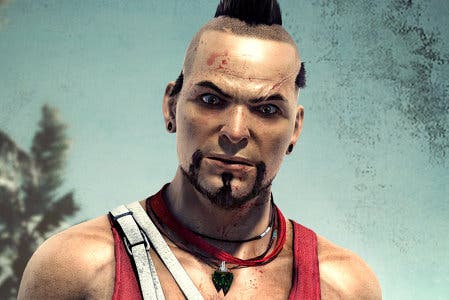


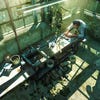
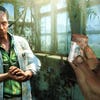











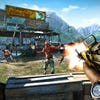

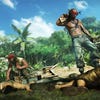








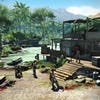
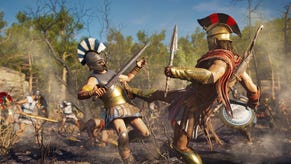

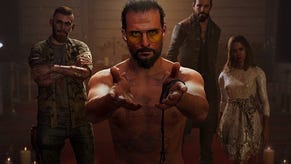
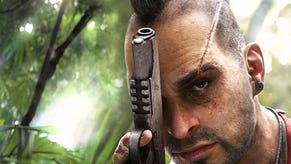
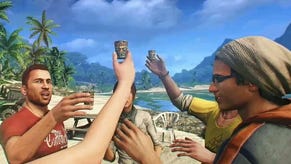
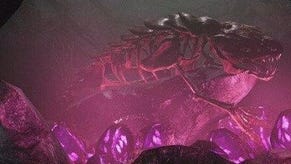
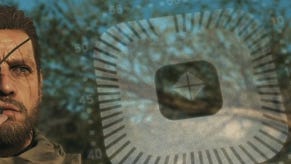
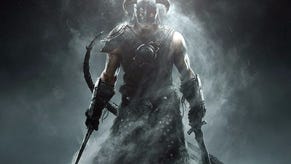



.png?width=291&height=164&fit=crop&quality=80&format=jpg&auto=webp)



